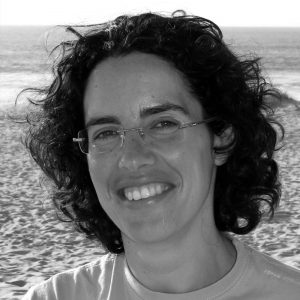Summary
The North Atlantic region plays a rather special role in the global climate, by being a preferred location for the development of major atmospheric storms, at both tropical and extra-tropical latitudes, and by its potential control of the deep ocean circulation. Atmosphere-ocean processes occurring in that region affect climate in a large domain, especially in Europe and North America, and theirsensitivity to climate change is a major concern. Ocean regions, which remain largely uncharted domains even in the satellite era, represent a fundamental piece in the puzzle of global Earth dynamics. The limited knowledge of ocean processes is a direct consequence of observational challenges.
This exploratory project proposed to use unique ocean and land-based seismic datasets, collected in and around the North Atlantic, both on the seafloor, ocean islands and margins, to study ocean processes and the internal structure of the Earth. The work plan aimed at proving concepts that, if successful, could later be applied to larger datasets and/or be used for operational/monitoring purposes.
The project was structured around three main tasks:
1) Using seismic data to image ocean storms, assessing its results against meteorological reanalysis;
2) Evaluating the impact of the steep topography of ocean islands on the microseismic wavefield, with impact on imaging the sub-surface;
3) Using OBS data as a proxy for ocean bottom currents.
The aims of the project were deemed relevant to the mission of the Azores International Research (AIR) Center, in particular to understand climate change, ocean processes and imaging sub-surface georesources in oceanic domains. STorM sought to explore innovative seismology- based tools to observe the oceans, in parallel with state-of-the-art meteorological reanalysis, bringing together knowledge from atmospheric, ocean and solid earth science.
| Title | Atmosphere – Ocean – Solid Earth Coupling: Seismic Tools to Explore and Monitor the Oceans |
| Reference | UTAP-EXPL/EAC/0056/2017 |
| Scientific Area | Space-Earth Interactions |
| Funding | € 99 984,00 plus matched funding at UT Austin |
| Leading Institution | FCiências.ID – Associação para a Investigação e Desenvolvimento de Ciências (Fciências.ID) |
| Participating Institutions | The University of Austin at Texas (UT Austin) Fundação Gaspar Frutuoso, FP (FGF) Instituto Português do Mar e da Atmosfera, I. P. (IPMA) |
| Duration | 30 months |
| Begin date | November 6, 2018 |
| End date | May 5, 2021 |
| Keywords | Atmosphere-ocean dynamics, Earth Imaging, Geophysical tools, Uncertainty in inverse problems |
Main Highlights
- Map identifying the oceanic sources of seismic noise in the Cape Verde archipelago, central Atlantic;
- New empirical transfer functions that allow predicting ocean activity at a given location in the ocean given seismic data recorded on a point on land;
- Documentation of the effect of the oceans in seismic data recording in the ocean bottom;
- Preliminary success of developing machine learning method (deep neural network and recurrent neural networks) on some historical data. The project is currently working on improving ocean storm imaging using machine learning techniques.
Indicators
- 1 Published paper in peer-reviewed journals;
- 2 Doctoral, 2 MSc. and 2 Undergraduate students involved in research work;
- 3 Mobility exchanges supported.
Papers and Communications
- Rodrigues, Diana, Characterization of microseismic noise in the Azores and its relationship to ocean activity, MSc in Ciências Geofísicas, FCUL, PT team (Dissertation)
- J. F. Carvalho, G. Silveira, M. Schimmel, and E. Stutzmann. Characterization of microseismic noise in Cape Verde. Bulletin of the Seismological Society of America, 109(3):1099–1109, May 2019. https://doi.org/10.1785/0120180291
E-Poster
Project Team
Susana Custódio
STorM
Tan Bui
STorM


